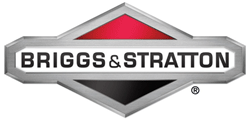Make sure you haven't got the discount earlier.
Appliance Parts
- Accessories
- Dishwasher
- Dryer
- Stove / Oven
- Microwave
- Refrigerator
- Washer
- See more... See less...
Lawn Equipment Parts
- Lawn Mower
- Chainsaw
- Blower
- Generator
- Air Compressor
- Lawn Tractor
- Pressure Washer
- See more... See less...
E. Coli Learning Center
Escherichia coli, generally referred to as E. coli, are a group of bacteria that are a common cause of food borne illnesses. When food that contains E. coli is digested, several uncomfortable symptoms can arise, including bloody diarrhea. Most forms of E. coli can come from undercooked ground beef, contaminated water, unpasteurized milk, or from working directly with cattle. Symptoms of this infection typically start seven days after one is infected with the bacteria. First signs of an E. coli infection are severe abdominal cramping, with an onset of watery diarrhea. The infection can cause blood diarrhea that can last two to five days. The bacterium thrives in the intestines, resulting in sores.
There are several complications that can develop from an E. coli infection. The most common complication is hemolytic uremic syndrome. Individuals who develop hemolytic uremic syndrome get hemolytic anemia (low red blood count), thrombocytopenia (low platelet count), and renal failure (kidney damage). E. coli can be diagnosed through a stool culture to determine if the bacteria are in the intestines. There is no recommended treatment for E. coli infections. Doctors recommend drinking plenty of water. If severe dehydration occurs, a hospital IV may need to administer fluids. It’s important that you avoid taking any medications to stop diarrhea during this time, as this can prevent the bacteria from leaving your intestines.
To find out more about E. coli, follow the references found below:
E. Coli Information
- Department of Health and Human Services: Find questions and answers about E. coli from the Centers for Disease Control and Prevention (CDC).
- Family Doctor: Learn how you can catch an E. coli infection and the complications that can arise from the bacteria.
- Overview of E. Coli: Description of what E. coli means and how E. coli came to be.
- Mayo Clinic: List of symptoms, causes, risk factors, complications, tests and diagnosis, and treatments and drugs used for an E. coli infection.
- Web MD: Topic overview of E. coli, exams and tests, home remedies, and a general treatment overview.
- National Institute of Allergy and Infectious Diseases: Research to help educate people about E. coli and its prevention.
- U.S. Food and Drug Administration: Learn about the nature of the E. coli bacteria and the associated foods that cause it.
- Bacterial Food Borne Illness: Quick facts and an overview of the various type of food borne illnesses.
- National Digestive Diseases Information: Find the answers to your questions on food borne illnesses and bacteria.
- Preventing Food Borne Illness and E. Coli: Learn what sanitation methods one can use to prevent infection at home and on the farm.
- Food Safety: Here you will find sources, the incubation period, symptoms, duration of illness, and other information on E. coli.
E. Coli Information for Kids
- Kids Health: Children can learn about types of good and bad bacteria, as well as information on E. coli and its symptoms.
- Scrub Club: Learn about the villains that can harm us, including germs such as E. coli.
- Controlling Infection on Farms: The Farming and Countryside Education website provides an E. coli information sheet.
- History for Kids: Find science information on the bacteria, E. coli, directed towards middle school kids.
- Science News for Kids: General information and projects on various types of viruses, including E. coli.
- Fight Bac: Find statistics of E. Coli, a type of food borne illness that commonly occurs in certain types of food.
- Food Safety Facts: List of tips on how to keep food safe from bacteria, such as in the case of E. coli and similar germs.
- United States Department of Agriculture: Find games and activities to teach about food safety.
E. Coli Materials for Educators
- Recombinant DNA Labs: Here you will find a teachers guide to running a lab for students to learn how bacteria transforms.
- Bacteriome: Interactive database for students to learn about the various aspects of E. coli.
- E. Coli Genetic Resources: Database of E. coli genes, strains, and mutations from The Coli Genetic Stock Center.
- Nutrition and Food Science: Objectives, materials, and procedures for student projects on E. coli and food borne illnesses.
- Summer Research Program for Science Teachers: Conduct an antibiotic resistance research project on E. coli.
E. Coli Indexes, Databases, and Journals
- Coli Base: Here you will find an online database for various types of bacteria, including Escherichia coli, or E. coli.
- ECCE: The E. coli Cell Envelope Protein Data Collection provides resources, such as a list of 452 signal sequences of E. coli envelope proteins.
- Public Health: Information on E. coli from the Canadian Medical Association Journal.
- E. Coli Treatment: Learn how veterinary researchers use antibiotics to fight illnesses caused by E. coli.
- Journal of Bacteriology: Here you will find a journal article on Escherichia coli and its impact on dieting.
- Infection and Immunity: Find issues of scientific journals surrounding E. coli and its immunity.
E. Coli Photo Galleries
- University System Water Center: Photo gallery of over 1021 in 12 categories of E. coli water testing.
- Medical, Science & Nature Images: Find several color enhanced photos of E. coli.
- E. Coli & Food Safety: Page of E. coli and food safety images, as well as bacteria on vegetables.
- Escherichia Coli: Find information and a close-up photograph of E. coli bacterium.
- Photos of E. Coli: Experimentation photographs of E. coli and maps of recent outbreaks in the United States.
- Search your model number to find:
- Genuine OEM parts guaranteed to fit
- Free manuals and guides
- Repair instructions and videos


































